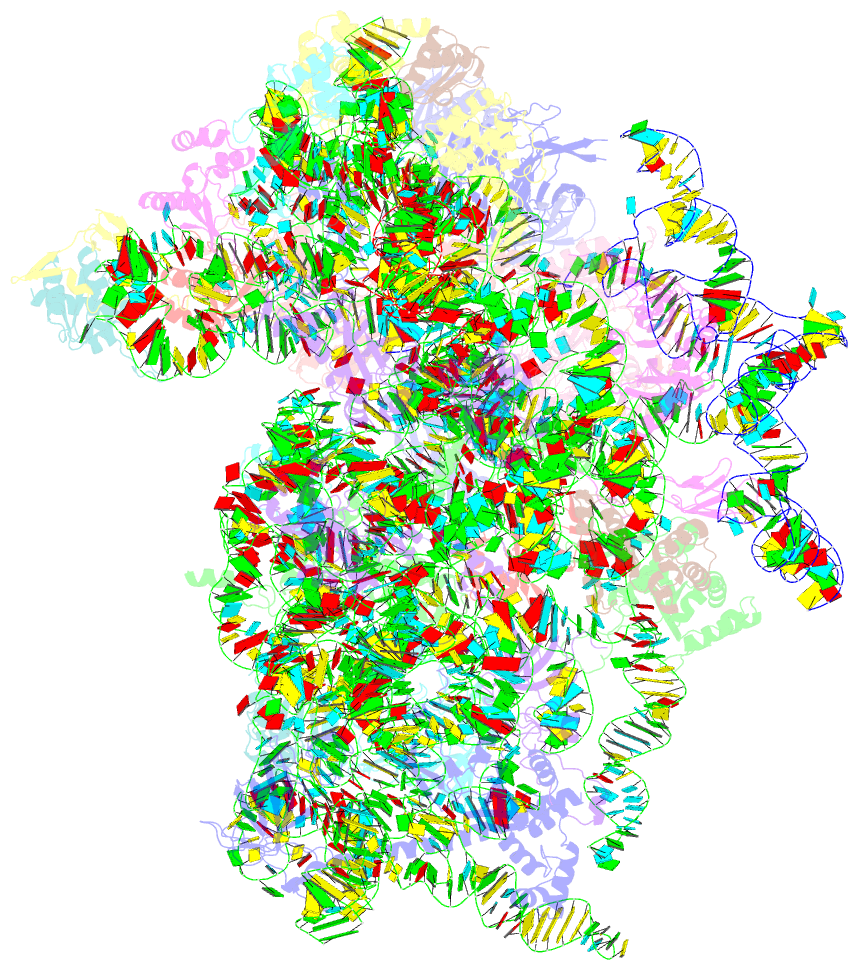Summary information and primary citation
- PDB-id
- 5oa3; SNAP-derived features in text and JSON formats;
DNAproDB
- Class
- translation
- Method
- cryo-EM (4.2 Å)
- Summary
- Human 40s-eif2d-re-initiation complex
- Reference
- Weisser M, Schafer T, Leibundgut M, Bohringer D, Aylett CHS, Ban N (2017): "Structural and Functional Insights into Human Re-initiation Complexes." Mol. Cell, 67, 447-456.e7. doi: 10.1016/j.molcel.2017.06.032.
- Abstract
- After having translated short upstream open reading frames, ribosomes can re-initiate translation on the same mRNA. This process, referred to as re-initiation, controls the translation of a large fraction of mammalian cellular mRNAs, many of which are important in cancer. Key ribosomal binding proteins involved in re-initiation are the eukaryotic translation initiation factor 2D (eIF2D) or the homologous complex of MCT-1/DENR. We determined the structures of these factors bound to the human 40S ribosomal subunit in complex with initiator tRNA positioned on an mRNA start codon in the P-site using a combination of cryoelectron microscopy and X-ray crystallography. The structures, supported by biochemical experiments, reveal how eIF2D emulates the function of several canonical translation initiation factors by using three independent, flexibly connected RNA binding domains to simultaneously monitor codon-anticodon interactions in the ribosomal P-site and position the initiator tRNA.





